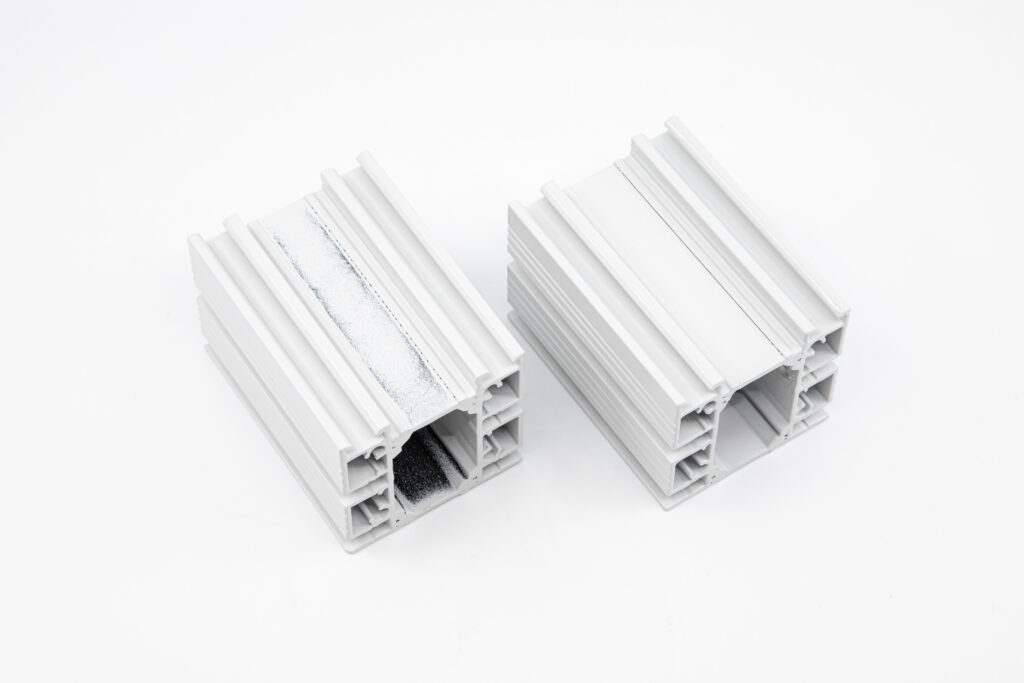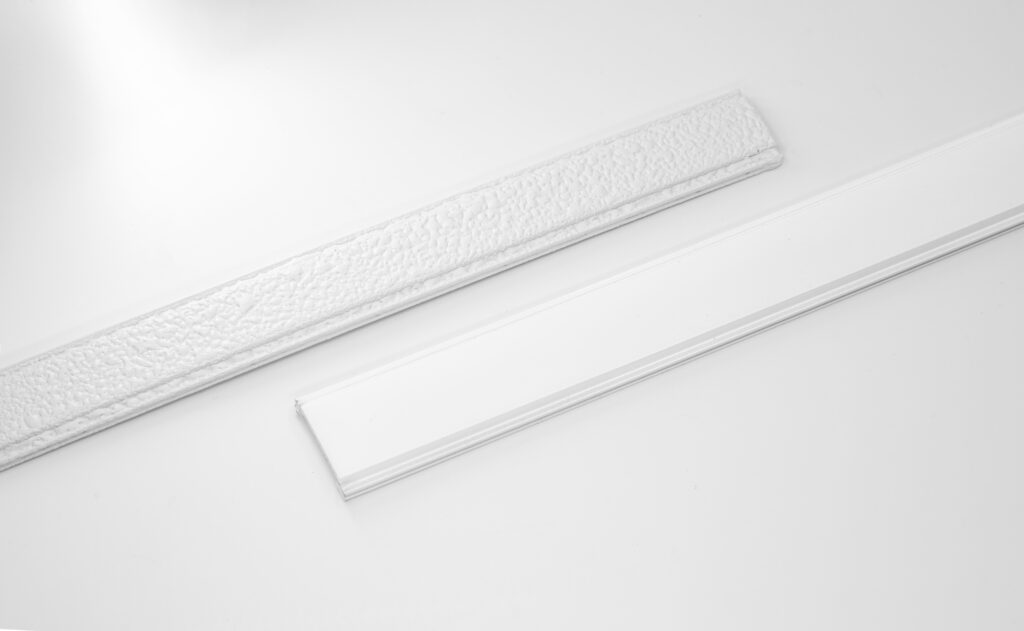
In the industry of aluminium system manufacturing, particularly when working with polyamide profiles, a key challenge is to ensure optimal paint adhesion during the lacquering process. During this process, the hygroscopic properties of the polyamide can have a detrimental effect on both the mechanical properties of the system assembly and the final lacquer finish, resulting in the formation of bubbles known as ‘blistering’. At STAC, we have developed PROCOAT, a solution designed to improve the adhesion of powder coatings to completely dry profiles. This helps to avoid defects such as blistering, as by increasing the electrical conductivity, the coating process is optimised without the need for additional steps.
Polyamide is a material that is widely used in industry for its thermal insulation properties. It has the characteristic of absorbing moisture from the environment, which affects its volume and its physico-chemical properties. During the coating process, high temperatures cause this moisture to evaporate, which can lead to dimensional changes that affect the assembly with the aluminium and the surface finish of the coating. As a result, defects such as rough surfaces, bubbles or even paint adhesion failure can occur.
To achieve a uniform and high-quality finish, it is essential to meticulously regulate the parameters of the coating process. This involves ensuring that the profile has the minimum moisture content and that the surface is adequately heated for optimal paint adhesion. However, this can present a challenge, particularly when working with complex profiles.

Thanks to our ongoing research and development, we are proud to present PROCOAT, a cutting-edge solution that effectively addresses these challenges without the need for additional processes or significant adjustments to handling conditions. PROCOAT allows for the lacquering of polyamide profiles with enhanced paint adhesion, even at low temperatures and when the profile is dry.
The use of PROCOAT improves the aesthetic and mechanical quality of lacquered polyamide profiles, as well as optimising the production process. By assembling profiles with a moisture content close to 0%, the risk of blistering is eliminated, allowing for less strict control of temperatures and lacquering times. Although pre-drying is required, this approach speeds up the manufacturing process and reduces the costs associated with traditional coating. This is particularly beneficial in sectors such as construction, where reliability and consistency of materials are essential to ensure energy efficiency and durability of installations.
If you are looking for a solution to improve the coating of polyamide profiles, PROCOAT is the answer.
We invite you to contact us to discuss how this development can transform your manufacturing process today.
